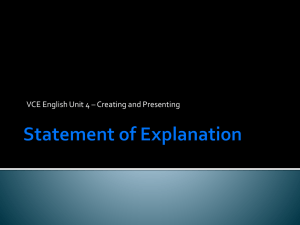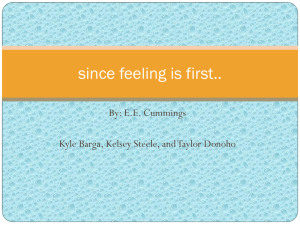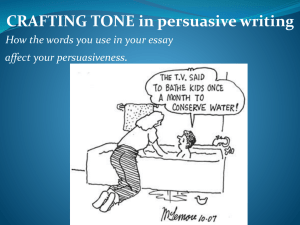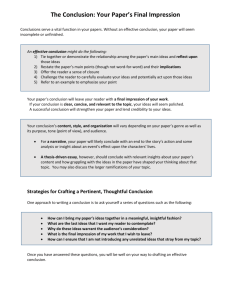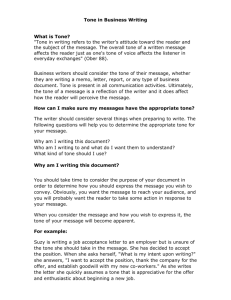LANGUAGE ANALYSIS ESSAY PLANNER
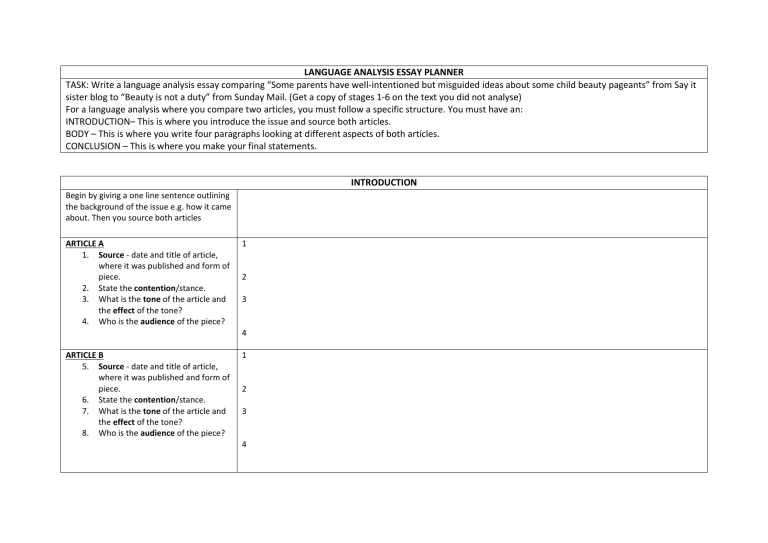
LANGUAGE ANALYSIS ESSAY PLANNER
TASK: Write a language analysis essay comparing “Some parents have well-intentioned but misguided ideas about some child beauty pageants” from Say it sister blog to “Beauty is not a duty” from Sunday Mail. (Get a copy of stages 1-6 on the text you did not analyse)
For a language analysis where you compare two articles, you must follow a specific structure. You must have an:
INTRODUCTION– This is where you introduce the issue and source both articles.
BODY – This is where you write four paragraphs looking at different aspects of both articles.
CONCLUSION – This is where you make your final statements.
INTRODUCTION
Begin by giving a one line sentence outlining the background of the issue e.g. how it came about. Then you source both articles
ARTICLE A
1.
Source - date and title of article, where it was published and form of piece.
2.
State the contention/stance.
3.
What is the tone of the article and the effect of the tone?
4.
Who is the audience of the piece?
ARTICLE B
5.
Source - date and title of article, where it was published and form of piece.
6.
State the contention/stance.
7.
What is the tone of the article and the effect of the tone?
8.
Who is the audience of the piece?
4
3
2
4
1
3
1
2
BODY PARAGRAPH 1
While you are reading you must work out what is similar about the articles – This will be discussed in paragraph 3.
You must also figure out what is different between the articles – This will be discussed in paragraph 4.
ARTICLE A
P1 – Article One
T – Topic Sentence
This article discusses …
E - Example WITH quotes (tone and technique)
Author uses a series of rhetorical questions to support the idea that…
E – Effect on reader/viewer
L – This argument contrasts with the article by…
Expand on tone, supporting arguments and how the techniques are used to persuade the reader/viewer
ARTICLE B
P2 – Article One
T – Topic Sentence
This article discusses …
E - Example WITH quotes (tone and technique)
Author uses a series of rhetorical questions to support the idea that…
E – Effect on reader/viewer
L – This argument contrasts with the article by…
Expand on tone, supporting arguments and how the techniques are used to persuade the reader/viewer
YOU CAN NOT DISCUSS EVERY ELEMENT OF THE
ARTICLE. CHOOSE THE MOST OBVIOUS.
BODY PARAGRAPH 1
SYNTHESIS FOR BOTH ARTICLES
This is where you take both articles and discuss the SIMILARITIES between them.
What do they have in common?
This could be a few persuasive devices or the audience or the form or they may be both tabloid. Pick up anything that they have in common.
Eg. Both opinion pieces use anecdotes to make the reader feel as though they are apart of the issue …. (example, then effect)
SYNTHESIS FOR BOTH ARTICLES
This is where you take both articles and discuss the DIFFERENCE between them.
What makes the articles stand out?
Discuss this.
Eg. Roger’s opinion piece uses loaded language and emotive appeal ….
Whereas Keith’s letter to the editor uses a different approach relying on emotive language …
Body- PARAGRAPH 3 SYNTHESIS
Body - PARAGRAPH 4 SYNTHESIS
This is where you discuss the overall effectiveness of the articles. What worked well and what didn't work so well. How well did the articles achieve their purpose? What effects or how did it impact the reader. Overall features that allowed the articles to be successful.
CONCLUSION
Criteria Very High High Medium Low Very Low Comments
Criterion 1 (10marks)
Knowledge and control of the chosen content and effectiveness and appropriateness of the exploration of ideas.
An understanding of the writer’s contention and how they have shaped the piece to influence the reader
An understanding of how and why language has been used in the articles.
Discussion of language use in the presentation of the issue, showing awareness of how writers use strategies to position readers in particular ways.
Criterion 2 (5 marks)
Coherence and effectiveness of the structure and organisation of the writing.
A structure appropriate to the word length and form. ·
Effective and appropriate selection of ideas.
Coherent ordering and development of ideas.
Criterion 3 (5 marks)
Control of the conventions of the English language.
Control of the mechanics of language to support meaning.
Effective and accurate language appropriate to the specific purposes of the task.
Expressiveness and fluency.
10-9
5
5
8-7
4
4
6-5
3
3
4-3
2
2
2-1
1
1
Overall result (mark out of 20) :
/20 scale: A+ = 20-18; A = 17-16; B+= 15-14; B = 13; C+ = 12-11; C = 10; D+ = 8-9; D = 7; E+ = 6-5; E = 4-3




